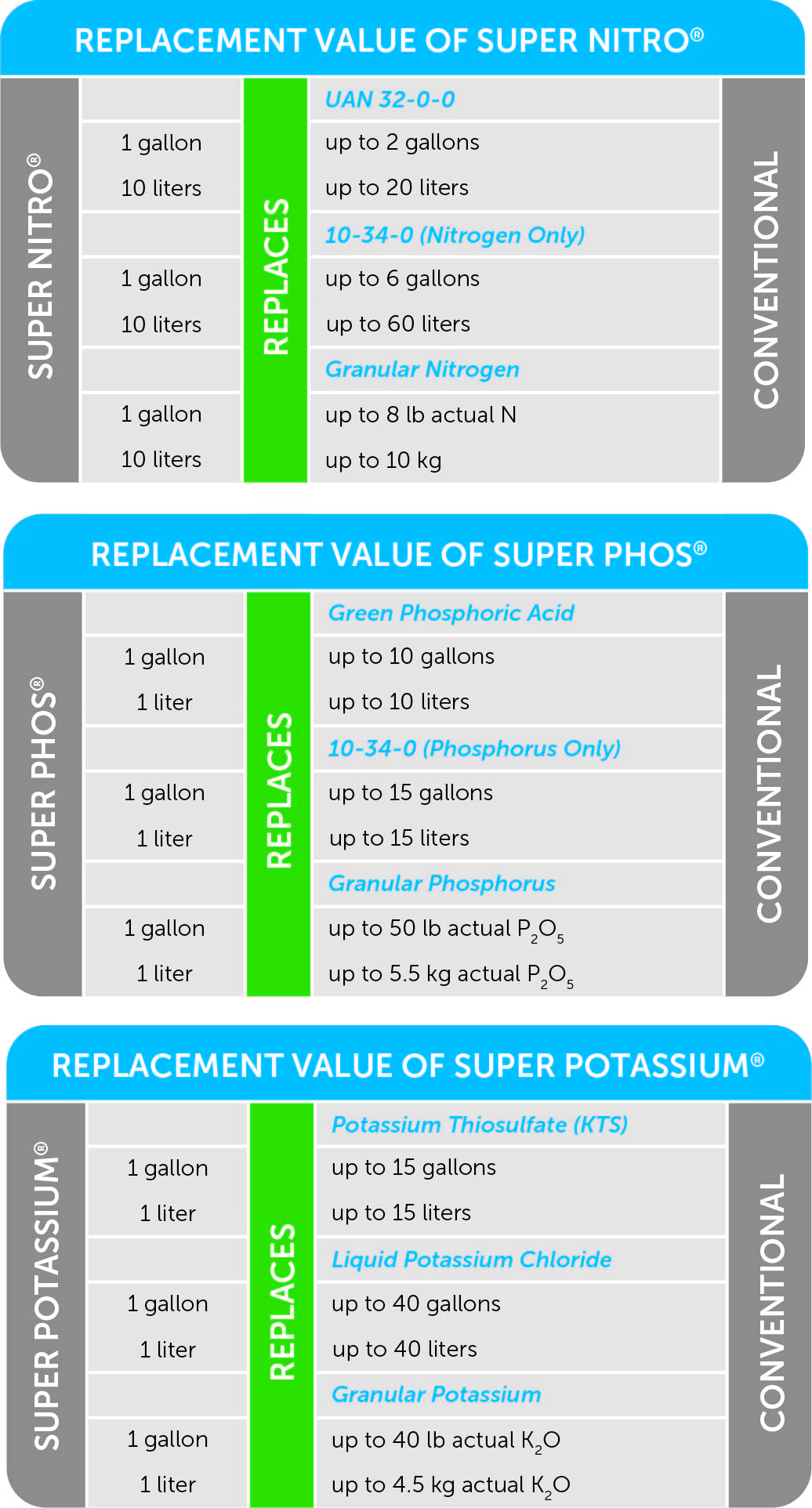Huma Gro® products with Micro Carbon Technology® offer an unsurpassed level of application efficiency, allowing farmers to grow more with less fertilizer input. Growing more with less lowers input costs and maximizes return on investment. It also decreases the amount of N-P-K residues that can negatively impact the environment.

- 1 gallon of Super Nitro® replaces the nitrogen component of 6 gallons of 10-34-0.
- 1 gallon of Super Phos® replaces the phosphorus component of 15 gallons of 10-34-0.
- 1 gallon of Super Potassium® replaces up to 40 gallons of liquid potassium chloride.
And there is more value to be had:
- Ultra-concentrated, low-salt-index liquid formulations mix well with other nutrient solutions, PGRs, and pesticides.
- All products can be foliarly applied, without risk of leaf burn, for immediate nutrient uptake.
- All products can be soil-applied, using any irrigation system, without risk of tie-up. Nutrients remain stable and available in the root zone.
How well do these products work in the field? Here are some examples:
- Super Phos® on Corn 15x More Efficient Than Conventional Phosphorus (10-34-0)
- Super Phos® Applied at 1/8 Rate of Conventional Phosphorus Improves Soybean Yield
Read the full N-P-K brochure.
Related Posts

The Huma Gro Farmer Podcast: Episode 4 – Soil Biology and Soil Health with Promax®
By Jael Batty In Episode 4 of The Huma Gro Farmer podcast, we discuss Soil Biology and Soil Health with Promax®. Promax® is an OMRI-listed organic pesticide that kills soil pathogens and nematodes. Join us as we discuss crop protection with our experts, Bio Huma Netics, Inc. President and CEO Lyndon Smith, and Eastern U.S.

The Huma Gro Farmer Podcast: Episode 10—Growing Premium Potatoes – Blog

Rutgers Univ.: Huma Pro® Stimulates Root Growth
Huma Pro® Stimulates Rhizophagy Cycle of Microbes to Increase Root Growth, Rutgers Univ. Conducted by: James White, PhD, Rutgers University Huma Gro® Products: Huma Pro® OBJECTIVE The purpose of this research project was to evaluate how humic acids stimulate microbial activity and initiation of the rhizophagy cycle (in which plants cultivate microbes on their roots

